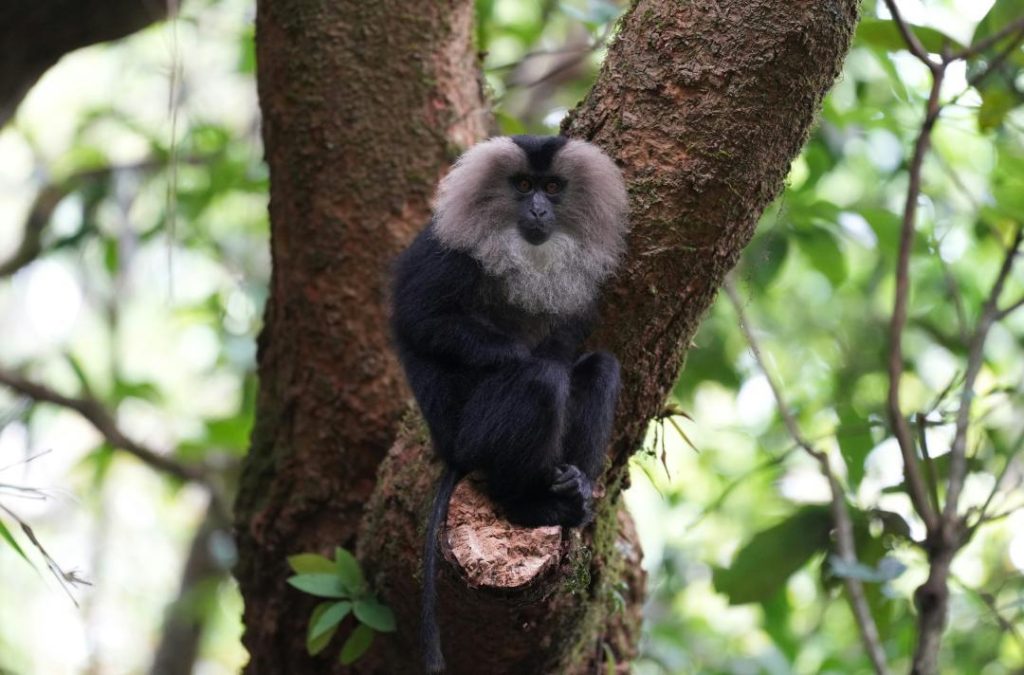
Insights into the Behaviour of Lion-tailed Macaques: A Study Sheds Light on How India’s Primates Navigate the Changing World
The lion-tailed macaque, a species of Old World monkey, is native to the Western Ghats of India. These agile primates are known for their impressive vertical climbing abilities, which enable them to navigate the dense forest canopy with ease. However, their habitat is under threat due to deforestation and fragmentation, making it essential to understand their behaviour and adaptability to survive in these changing environments.
A recent study published in the journal “Animal Behaviour” has shed new light on the habitat use and movement patterns of lion-tailed macaques. By incorporating three-dimensional space analysis, researchers from the Indian Institute of Science (IISc) and the University of Hyderabad have gained valuable insights into the behavioural adaptations of these remarkable primates.
Three-Dimensional Space Analysis: A New Approach
Traditionally, studies on primate habitat use have focused on horizontal movement patterns, ignoring the vertical dimension. However, lion-tailed macaques are known to move not just horizontally but also vertically, using trees and vines to traverse the forest. To capture this dynamic movement pattern, the researchers employed a novel approach, using three-dimensional space analysis to map the monkeys’ movements.
The team collected data on the movement patterns of lion-tailed macaques in a fragmented forest in the Western Ghats. They fitted the monkeys with GPS collars and observed their movements over a period of several months. The data was then used to create three-dimensional maps of the forest, which revealed the monkeys’ intricate navigation patterns.
Flexible Strategies for Survival
The study’s findings highlight the remarkable adaptability of lion-tailed macaques in using the entire forest structure. The monkeys’ flexible strategies for navigating the fragmented forest were crucial for their survival, as they exploited different vertical layers to access food, shelter, and potential mates.
The researchers discovered that the monkeys used a variety of vertical structures, including trees, vines, and rock faces, to move through the forest. They also found that the monkeys’ movement patterns were influenced by the availability of food and shelter, as well as the presence of predators.
Implications for Conservation
The study’s findings have significant implications for conservation efforts aimed at protecting the lion-tailed macaque population. By understanding the monkeys’ habitat use and movement patterns, conservationists can develop more effective strategies for preserving their habitat and mitigating the impacts of fragmentation.
The study’s lead author, Dr. Senthilvel Selvaraj, emphasized the importance of considering the vertical dimension in conservation efforts. “Lion-tailed macaques are arboreal, and their movement patterns are closely linked to the forest canopy. By ignoring the vertical dimension, conservation efforts may overlook the monkeys’ crucial habitat needs,” he said.
Conclusion
The study on lion-tailed macaques’ habitat use and movement patterns has provided valuable insights into the behavioural adaptations of these remarkable primates. By incorporating three-dimensional space analysis, the researchers have shed new light on the monkeys’ dynamic movement patterns and their flexible strategies for survival in fragmented forests.
As the lion-tailed macaque population faces threats from habitat destruction and fragmentation, it is essential to prioritize conservation efforts that take into account the monkeys’ unique habitat needs. The study’s findings offer a crucial step towards developing more effective conservation strategies for these endangered primates.
News Source:






